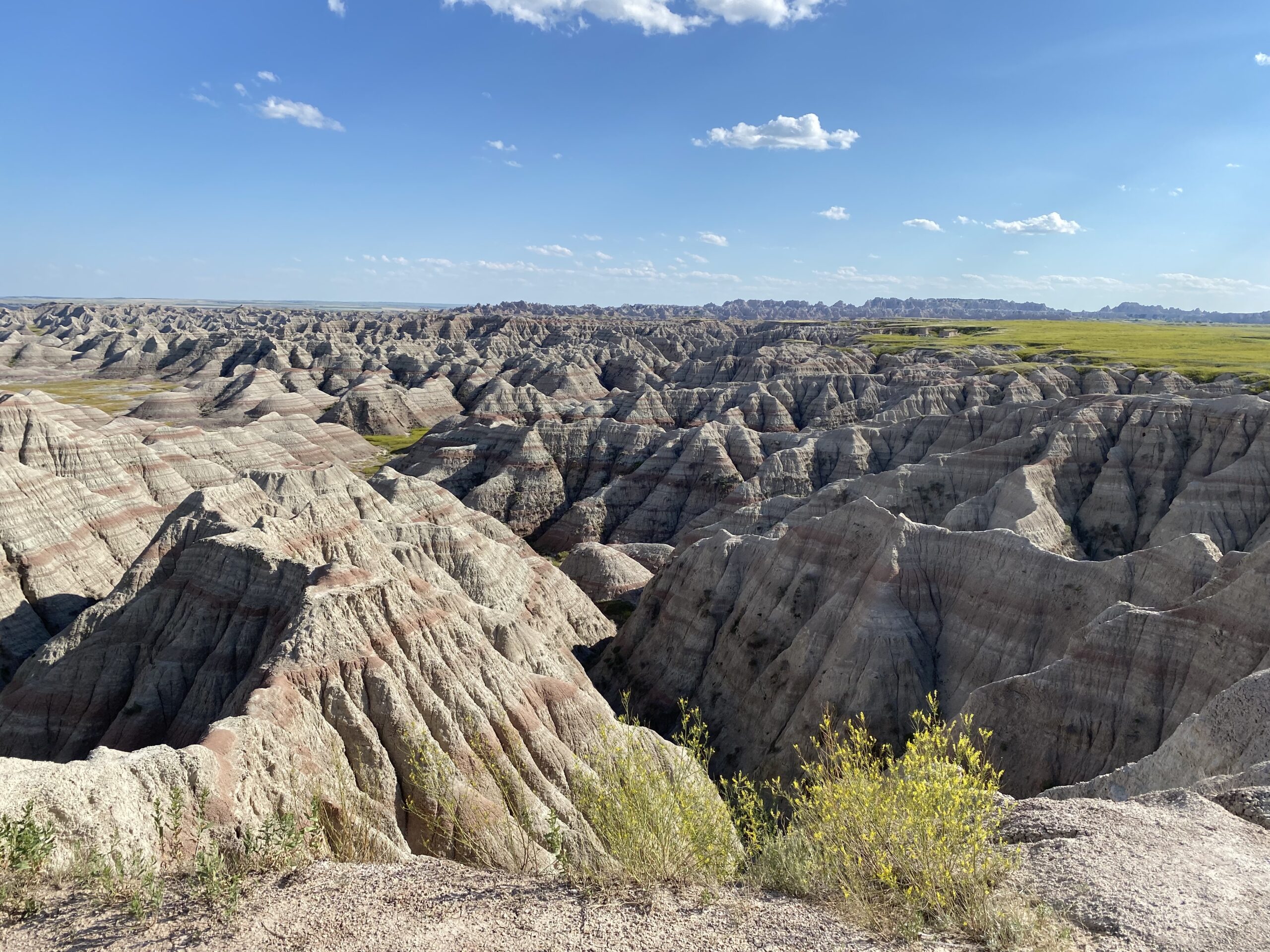Some national parks you can explore for weeks and never get close to seeing all they have to offer. Other parks you can see everything in a single day. Badlands National Park, in South Dakota, is probably a one-day park.
The Badlands is nonetheless a fascinating place to visit to see how rapid erosion creates an otherworldly landscape. As we had campground reservations in nearby Wall, S.D. for four days, we had to find some things to see and do outside of the park as well.
But let’s start with the park. Badlands is set up for a quick visit. There’s a main road that traverses the entire park, with numerous pullouts and overlooks to see nature’s handiwork. Some of the stops have short trails that take you into the middle of the action, but mostly can be done in under an hour.

We arrived from the Black Hills region just after noon, set up camp and went to hike a popular threesome of trails. The 1.5-mile Notch Trail is probably the best trail in the park, including a log ladder that helps hikers over a particularly steep part in the trail. The trail then continues to a nice viewpoint at the namesake notch. From same parking lot, we also hiked the shorter Window and Door trails.
We came back the next day to do the scenic drive through the park, stopping at all the overlooks. Badlands form as a result of two opposing forces: deposition and erosion. Over the course of millions of years, rock layers were deposited by inlands seas, rivers and wind, like the layers of a birthday cake. Then erosion began wearing away those rock layers as the Cheyenne and White Rivers carved the landscape. The Badlands are still eroding at a rate of one inch a year.

The terrain looks horribly difficult to cross on foot, which is probably why there are few good hiking trails in the park. There are some multi-day trails, but with the oppressive summer heat, we had no plans to tackle any of them.

Just outside, the park, we also visited an old homestead complete with an original dugout sod house. The homestead has been maintained much as it looked in the early 20th century as settlers tried to eke out an existence on the unforgiving plains. With no trees from which to build, they cut sod into bricks and stacked them to make walls. The sod houses were (relatively) warm in the winter, and (relatively) cool in the summer. But they were essentially living in and on dirt.

The site also had a resident population of prairie dogs, including a family of white prairie dogs which apparently can only be found in Badlands area of South Dakota.

The owner of the site also invited us to check out the outhouse as we toured the homestead. We opened the door and looked straight in the eyes of John, a mannequin sitting inside. I’m sure the owner gets quite the chuckle out of that gag.
The last site we really wanted to visit in the area was the Minuteman Missile Site, a decommissioned control room and missile silo that dates back to the cold war.
Some 1,000 nuclear missiles were sited in the Great Plains, from 1963 through the early 1990s, on constant alert for the possibility of a nuclear war. Hundreds of those missiles remain active today. The Minuteman Missile National Historic Site is operated by the National Park Service, and provides a fascinating window into the nuclear deterrent in place. There were 15 Launch Control Facilities that commanded and controlled 150 Launch Facilities, or missile silos, holding Minuteman Intercontinental Ballistic Missiles. The park preserves two of these facilities: Launch Control Facility Delta-01 with its corresponding underground Launch Control Center, and Launch Facility (Missile Silo) Delta-09.

Unfortunately, tickets to tour the underground launch control facility are incredibly hard to get. They sell out months in advance. But the visitors center has a nice alternative, with a virtual tour of the underground control center, narrated (in person) by a former employee. These soldiers sat in the control rooms waiting for the command to launch the missiles. It was generally a tedious task and most brought something to do to kill time. Many studied for and completed graduate degrees while waiting to turn the key and end the world as we know it.
From the visitor center, it’s a short drive up the interstate to the missile silo, which is now covered with a transparent plexiglass so you can see the missile sitting inside. (The missile on display is a training missile, without a nuclear warhead, in case you were wondering.)
During the virtual tour, we learned that the missile silo sites had nobody stationed there. It was after all, a rocket launch pad buried in the ground. The silos were fenced off to prevent intruders and saboteurs, but the motion detectors were often tripped by jack rabbits. The soldiers from the nearby airbase would have to rush off to make sure nobody was messing with the missile silos and chase off the pesky hares.
Wall, S.D. is also the site of a unique roadside attraction, Wall Drug, which advertises its location with thousands of billboards up and down I-94. We had been there years earlier and so didn’t feel the need to return. Although their famous cider donuts did tempt us.
Days: 168
Miles Traveled: 22,671
Next stop: De Smet, SD


